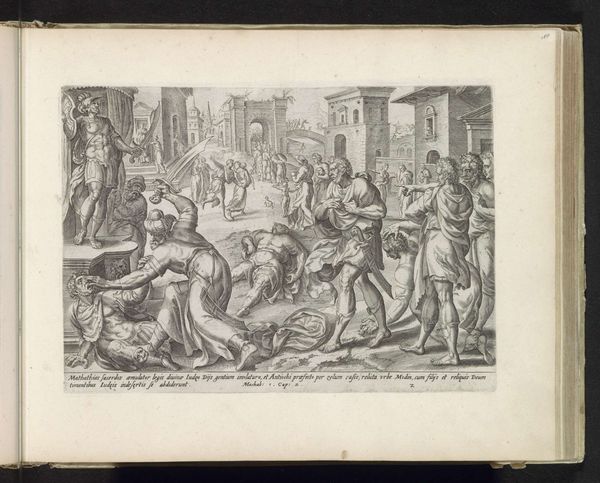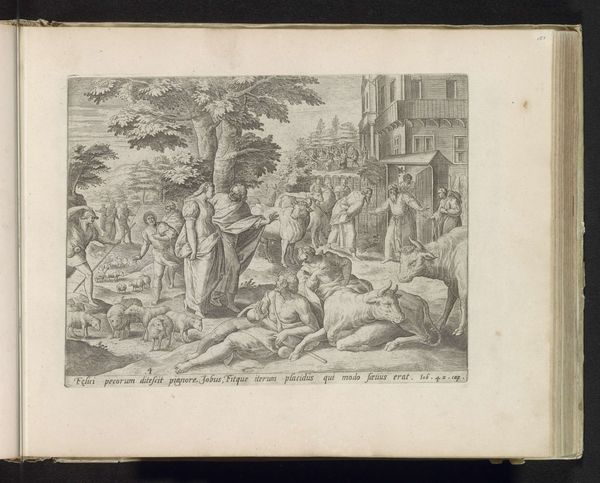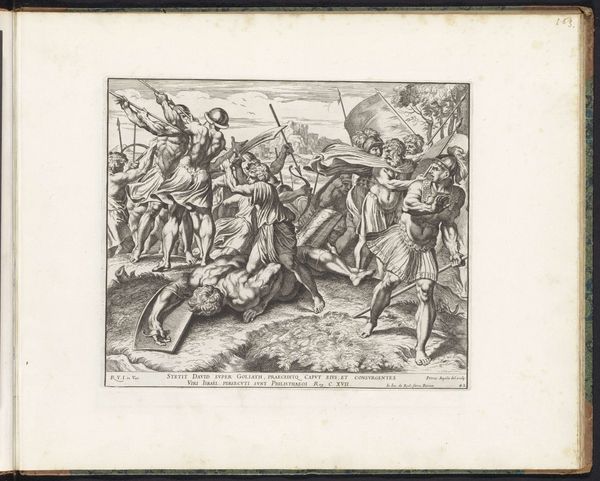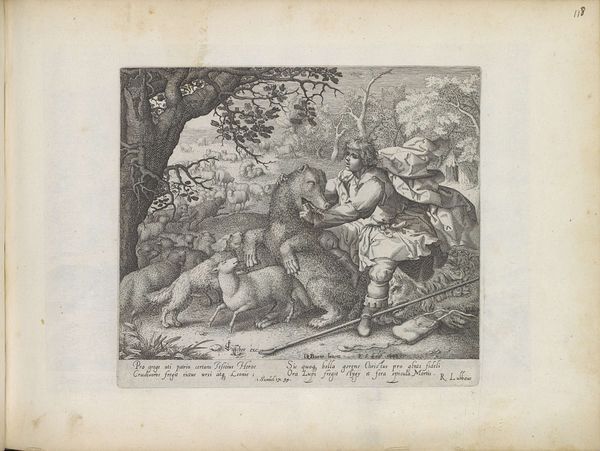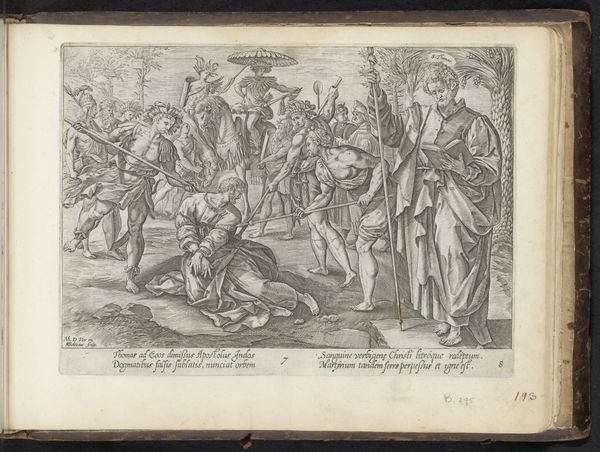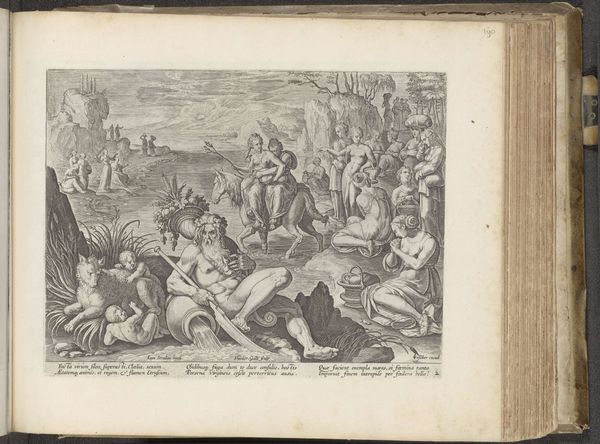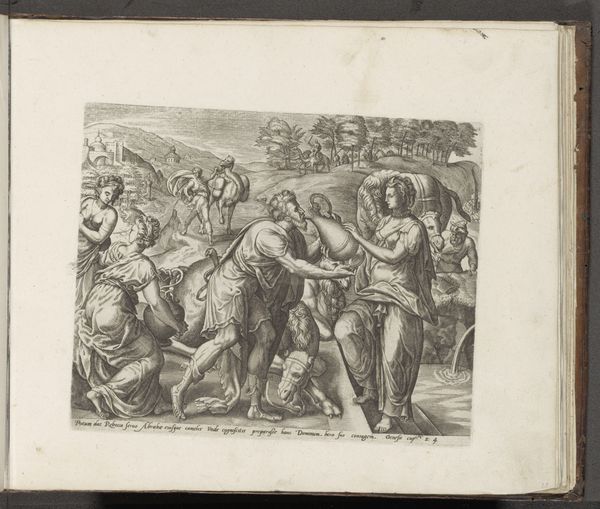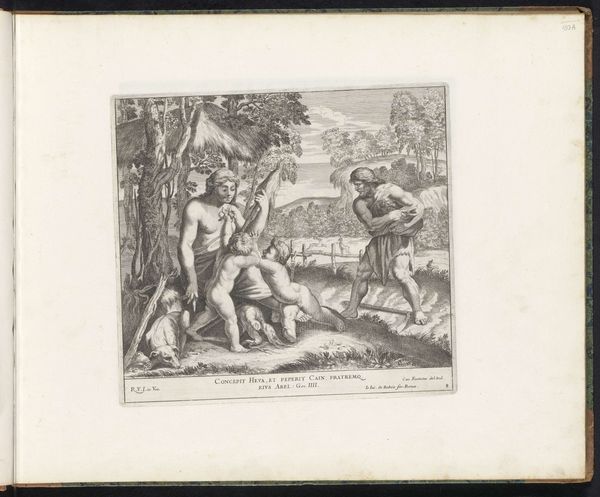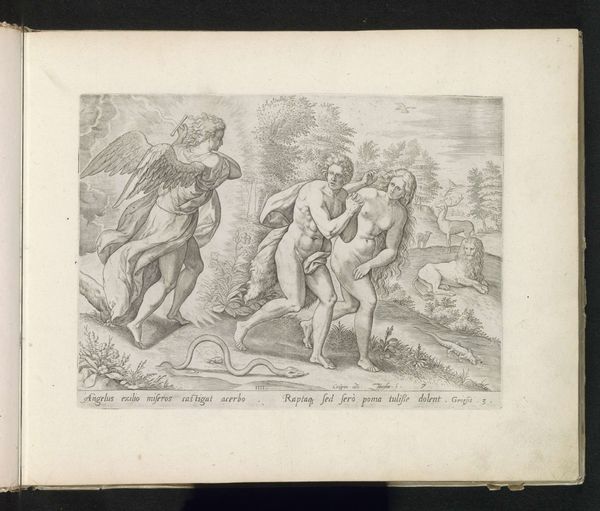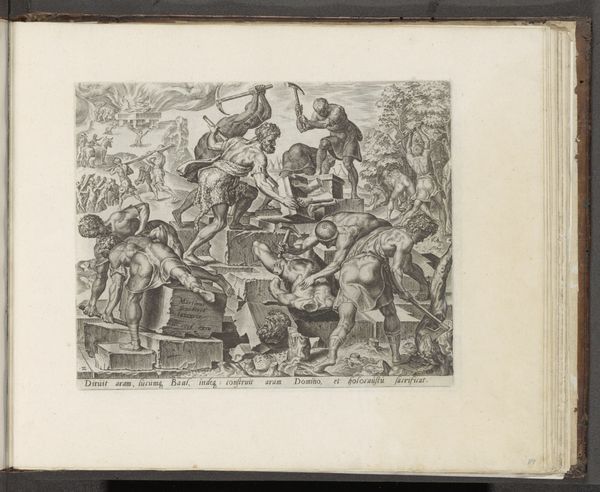
Dimensions: height 204 mm, width 288 mm
Copyright: Rijks Museum: Open Domain
Curator: Let’s consider this 1585 engraving by Wierix, housed here at the Rijksmuseum. It's titled "Cleansing of the Temple in Jerusalem.” What strikes you first? Editor: Well, it’s rather busy, isn’t it? A bit like those hyper-detailed scenes you find on old tapestries. It has an undeniable intensity, all these sinewy figures in such violent action! The theatrical composition lends itself to be consumed from afar, from the whole to the details. Curator: "Busy" is a fair description. Wierix was working within the Mannerist style, so this density and emotional fervor were definitely part of the aesthetic. He uses the printmaking technique of engraving to build a visual storm. Notice how he uses fine lines to define forms, which creates an energetic tension. Editor: Speaking of that technique, one has to consider what an immense undertaking engraving is, isn’t it? The material demands and hours spent meticulously etching into metal; this isn’t a spontaneous act like painting. How did his socio-economic conditions and training, which I imagine were costly, facilitate the final image? Curator: Absolutely. The means of production dictate a certain deliberate control, but look how Wierix breaks from convention, allowing an almost baroque intensity of feeling, despite his formal choices. Editor: Right, one might initially overlook the raw physicality needed to make such a polished end-product. But for whom was Wierix making it? Where were his raw materials sourced from? All those details give clues about the market and circulation routes his engravings navigated, and hence how it communicates particular power dynamics to viewers even today. Curator: That gives me fresh perspective about the relationship of labor, devotion and iconoclasm present here! I hadn't thought of it in terms of those supply chains you mention. Editor: It shows how deeply entrenched those hierarchies are, maybe even in this very moment. Curator: Precisely. Thanks for drawing our attention to these questions! Editor: My pleasure! Now, where can we find evidence of Wierix's personal relationships to understand more how his artistic intentions developed at that historical juncture?
Comments
No comments
Be the first to comment and join the conversation on the ultimate creative platform.
